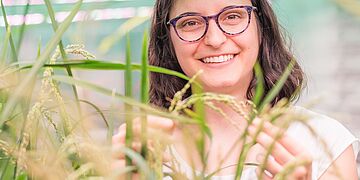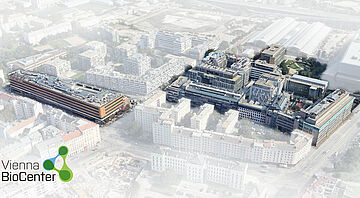
Neurobiology
How does the brain function?
The Vienna BioCenter is highly respected in the Vienna neuroscience scene as well as the global neurobiology community, and uses state-of-the-art techniques to address fundamental questions in the field. How do brains form and evolve? What are the molecular mechanisms that process and store information? How do activity patterns in neural circuits produce perception and behavior? And what mechanisms underlie neurological disorders?

Understanding nervous systems remains one of science’s greatest challenges. Tackling this challenge at the Vienna BioCenter are neurobiology research groups with diverse expertise in genetics, molecular biology, neurophysiology, and computational neuroscience, who together form a collaborative and inspiring environment. Taking advantage of a wide range of model systems including annelid worms, nematodes, insects, pigeons, fish, rodents, and human organoids, researchers investigate the underlying principles of nervous system function. Discoveries in brain development and regeneration provide insights into ageing, brain tumors, and disorders such as epilepsy, autism, and mental retardation; while a better understanding of how neural networks produce sensations, emotions, and behavior will inform treatment strategies for anxiety disorders and addiction.
Other groups investigate how organisms sense environmental cues such as lunar light or magnetic fields, going beyond the five traditional senses to ensure optimal interactions with the physical world, and are studying the basis for animal ‘body clocks’.
Finally, researchers are attempting to answer one of the greatest mysteries in neurobiology: why do animals sleep? Basic research often occurs in collaboration with clinical colleagues, increasing the translational potential of novel findings.

Neurobiology research has been given a boost in recent years by powerful new tools in optogenetics, imaging, and electrophysiology. Scientists at the Vienna BioCenter are taking full advantage of these technologies to measure and manipulate neural activity within genetically defined circuits, causally linking them to behavior; to track individual neurons during development; and to visualize processes at unprecedented resolution. They are also working with the Core Facilities, in particular the Advanced Microscopy Facility, to develop further innovations. Recent achievements include imaging of the whole nervous system in freely behaving worms, and single cell resolution of optogenetic activation. A major technological advance came with the establishment of a protocol for culturing cerebral organoids, derived from stem cells, that mimic the complex cellular organization of the developing human brain. These 3D culture models can also be derived directly from patient cells to create valuable neurological disease models.
Research Groups "Neurobiology"
| Research Group | Institute | Topic |
|---|---|---|
| Grade | IMBA | Mechanisms of plasticity after brain injury |
| Knoblich | IMBA | Brain development and disease |
| Urban | IMBA | Regulation of neural stem cell quiescence |
| Tanaka | IMP | Molecular mechanisms of vertebrate regeneration |
| Nimpf | Max Perutz Labs | ApoER2 and VLDL Receptor |
| Raible | Max Perutz Labs | Origin and Diversification of Hormone Systems |
| Tessmar | Max Perutz Labs | Lunar periodicity and inner brain photoreceptors |
| Golestani | Uni Vienna - Faculty of Life Sciences | Computational Modelling of Brain Function, Experimental Psycholinguistics and Psychophysics |
| Hummel | Uni Vienna - Faculty of Life Sciences | Development and Function of the Sensory System |
| Zimmer | Uni Vienna - Faculty of Life Sciences | Neural Network Dynamics and Behaviour |
| Wagner I | Uni Vienna - CeMESS | Cognitive Neuroscience of Neural Plasticity & Memory & Brain-Microbiome Interactions |



